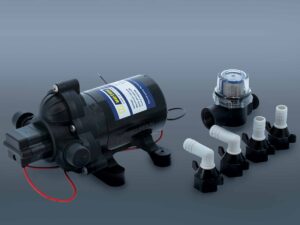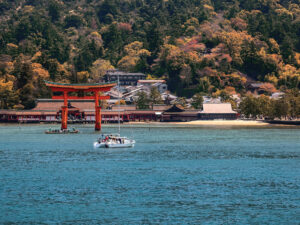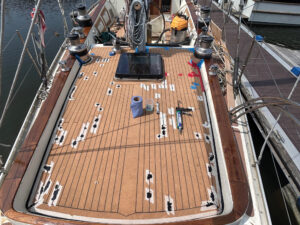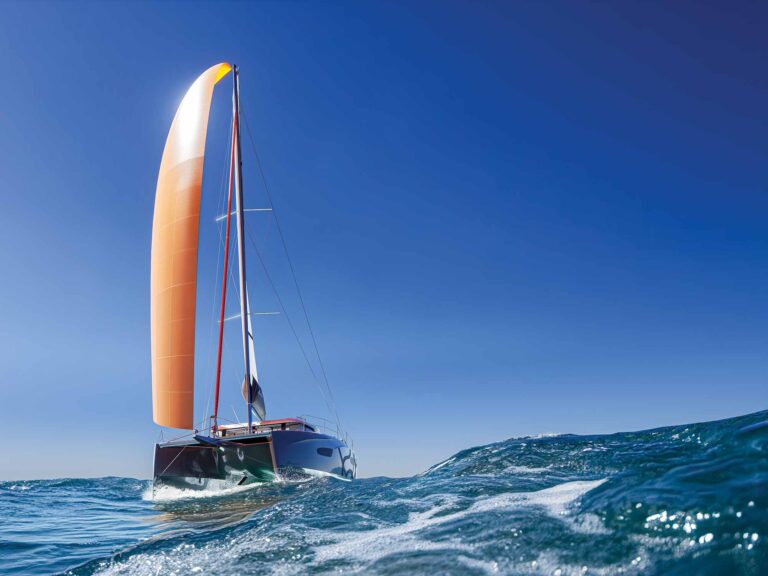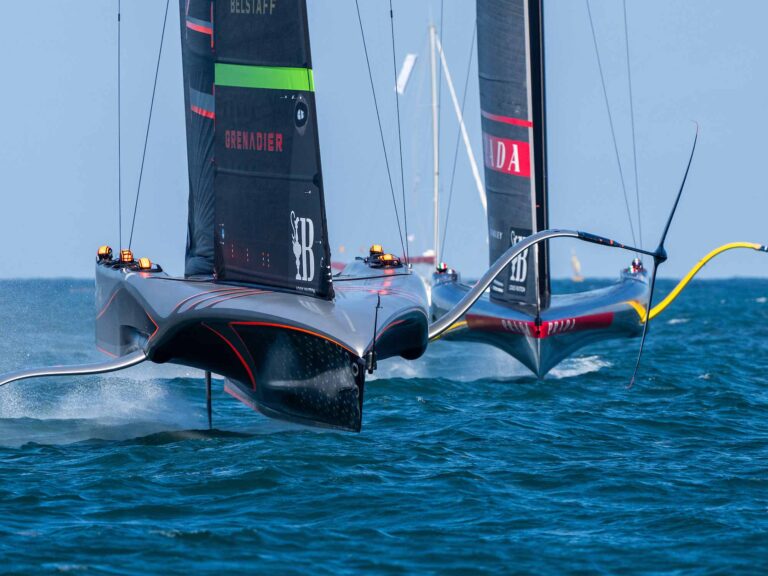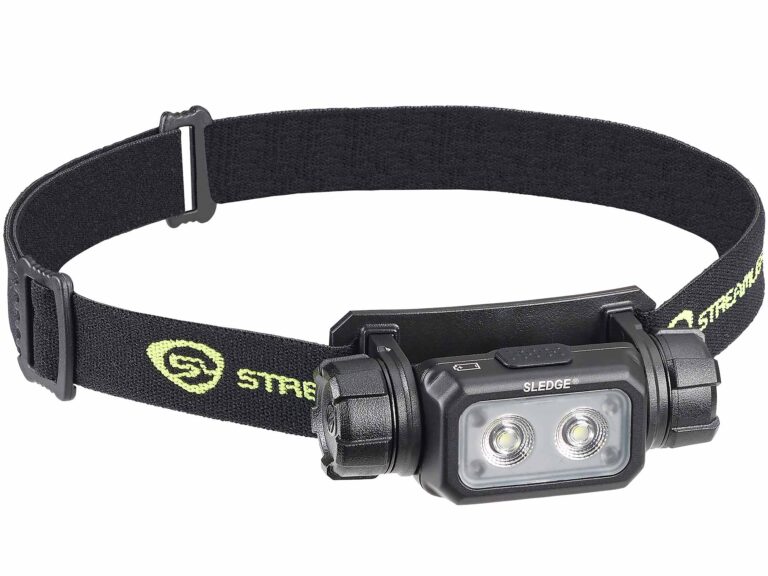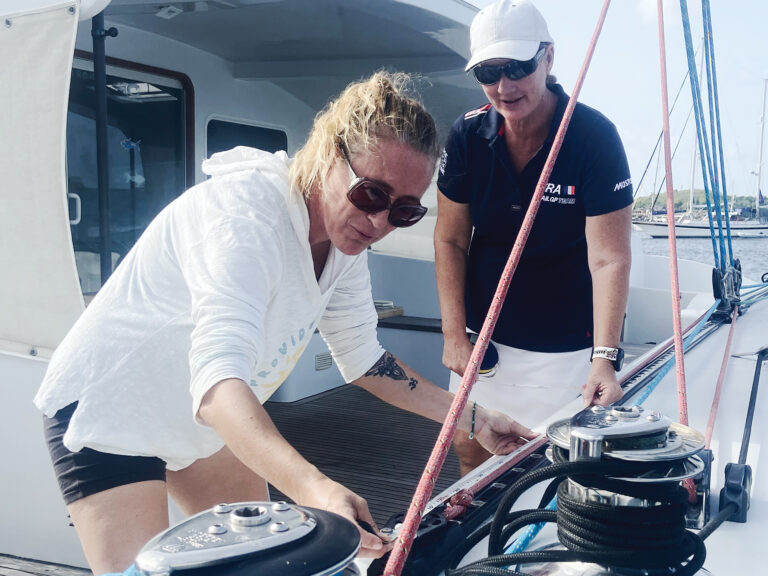
Sitting at the wheel and tweaking the sails of the new Leopard 50 on a breezy afternoon off the coast of Fort Lauderdale, Florida, last winter was pretty darned enjoyable. But then again, so was lounging around on the flybridge a few steps removed from the helm station, watching someone else do all the work.
In fact, strolling about the boat and taking in the expansive views from numerous vantage points, I quickly concluded there are any number of ways to enjoy the newest catamaran from Robertson and Caine. And that’s the whole idea, since the South African builder sells all of its boats into the Moorings and Sunsail charter fleets, and to private owners under the Leopard Catamaran brand. To be successful, a boat like the 50 has to have a little something for everyone, as they say.
Robertson and Caine first introduced the idea of a forward cockpit and watertight door in the front of the saloon with the Morrelli & Melvin-designed Leopard 44, which was named CW‘s Best Multihull and Import Boat of the Year in 2012. Alex Simonis and Simonis Voogd Yacht Design then took over at the drafting table, and the concept evolved over the course of three more models, including the award-winning Leopard 48, which the 50 replaces. It will be sold for charter as the Moorings 5000.
With each iteration, the melding of inside and outside space has increased, interior design has been refined and exterior styling has been sharpened. On the 50, the great outdoors literally pours into the saloon and sleeping cabins thanks to hull ports and overhead hatches and large windows around the house, and a flybridge option has been added to give sailors yet one more place to gather or get away from it all.
The 50 is also offered with a number of different layouts (more on those in a minute), and breaks the cabins-of-equal-size tradition when it comes to the charter market. The boat introduced at the Miami International Boat Show last winter was the four-cabin version — often the most popular for vacationers — but with a twist. Three couples get spacious en-suite accommodations, while one gets treated like true owners, with a master suite that takes up nearly two-thirds of the starboard hull and has its own companionway just inside the sliding door to the saloon. Forward, in that hull, the berth is athwartships, with a head and shower in the forepeak.
Other possibilities include a single cabin to port with storage or a workshop forward, or three en-suite cabins to starboard, bringing the total number of cabins to five. In any of the versions, crew accommodations are available far forward in the port hull.
Exterior options include either a large lifting swim/dinghy platform or traditional davits. The 50P (for performance) model features a raised helm station and overhead solid Bimini. The 50L (for lounge) sports a similar helm arrangement, but adds a flybridge with a U-shaped couch, table and tanning beds located atop the cockpit Bimini. It is reached via stairs from the starboard side deck. I measured head clearance under the boom at 6 feet 8 inches, which, in most cases, would be more than adequate to avoid accidents under way.
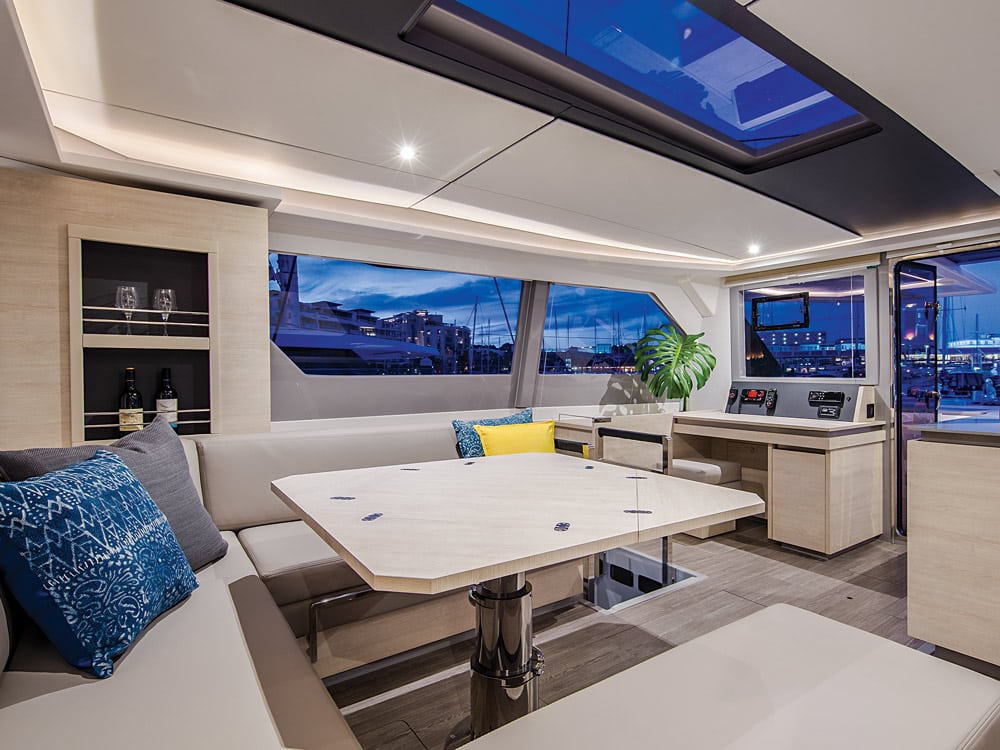
What is truly stunning about the 50 is the sense of openness, whether seated in the cockpit looking forward through the house, or in the saloon itself, where you’re surrounded by walls of glass and an overhead skylight that spans nearly the length of the room.
Designer Simonis said with each new model, the design brief calls for more visibility, which means fewer solid structural elements. To achieve that goal on the 50, both in the saloon and in the cabins below, carbon-infused ring frames were used in place of solid wood or composite bulkheads. Even the frame around the watertight forward door seemingly disappears in the design.
The aft end of the saloon opens wide, with sliding doors. In the cockpit, there’s a large table and U-shaped couch to port, and a cushioned settee opposite beneath the helm station.
A second forward-facing dining area is just inside the saloon to port. The table folds and can be lowered for cocktails, or it can open wide to accommodate a dinner crowd. A navigation desk is forward to port, just ahead of the companionway leading to the cabins below. Stainless handrails by the stairs have a clean look, and the dark nonskid steps have stainless nosing, which makes them quite visible.
The galley takes up much of the starboard side of the bridgedeck. A U-shaped counter and sink, with refrigeration under, look out onto the forward cockpit, cushioned lounging area and trampolines between the hulls. Just aft of the forward starboard companionway sits a second counter area with stove and oven, and two more drawers of refrigeration/freezer space.
A boat fit out like hull number one, which we sailed following the Miami show, sells for right around $1 million; the base price of the 50, delivered to the East Coast of the U.S., is $850,000 (the Moorings charter version, at $899,000, comes fully equipped for rental).
The Leopard in Miami sported a square-top main (a conventional mainsail is also offered) and an overlapping genoa. Combined, they provided plenty of power to push us through choppy offshore seas. On a beam reach in 15 or so knots of wind, the GPS showed us loping along at a steady 9 knots; 10.4 knots in one puff was my personal best for the day. Off the wind, I’d expect most owners would take advantage of the sprit option and fly a code zero or some other downwind sail.
Sailhandling was made simple by having all control lines led to three beefy winches close at hand to the wheel — something that will be appreciated by charterers and cruising couples alike. Still, there was ample room for a second crew to stand by and lend a hand.
In Leopard mode, the new 50 would be a comfortable home, capable of ticking off a good day’s run. As the Moorings 5000, well, let the parties begin.
Mark Pillsbury is CW’s editor.

